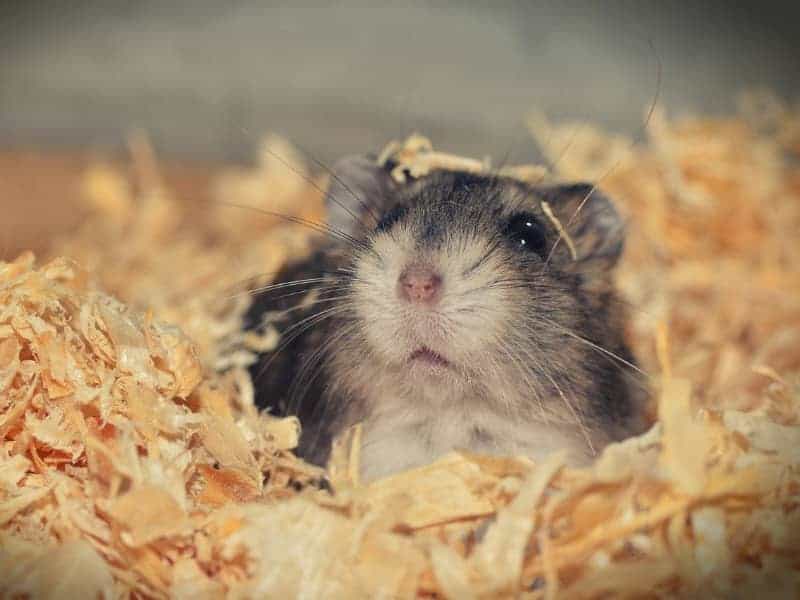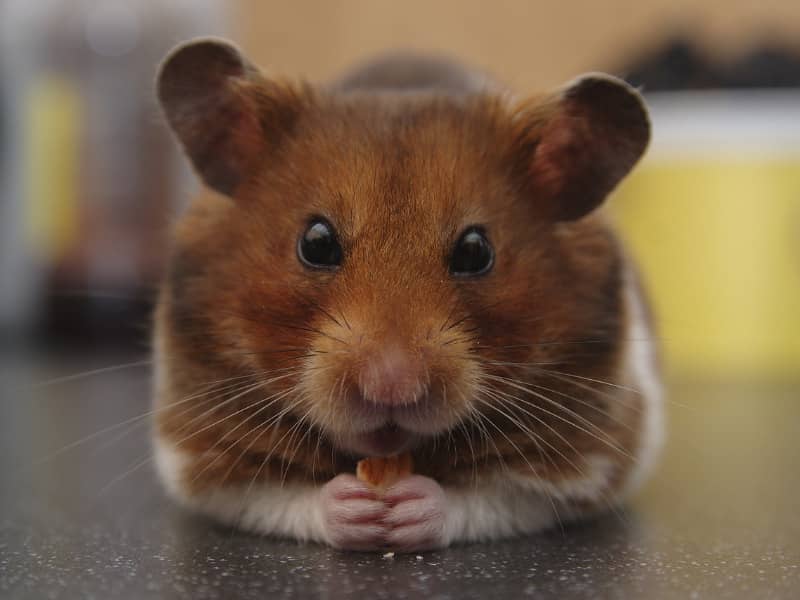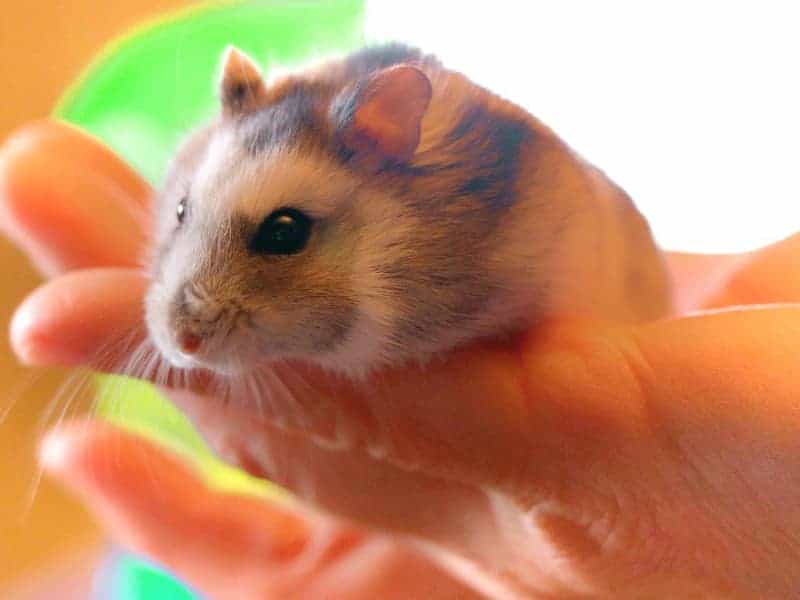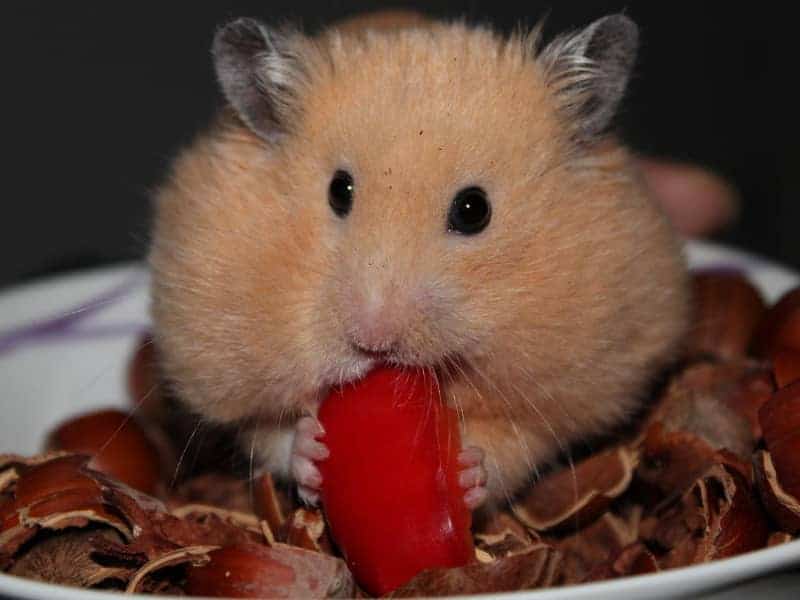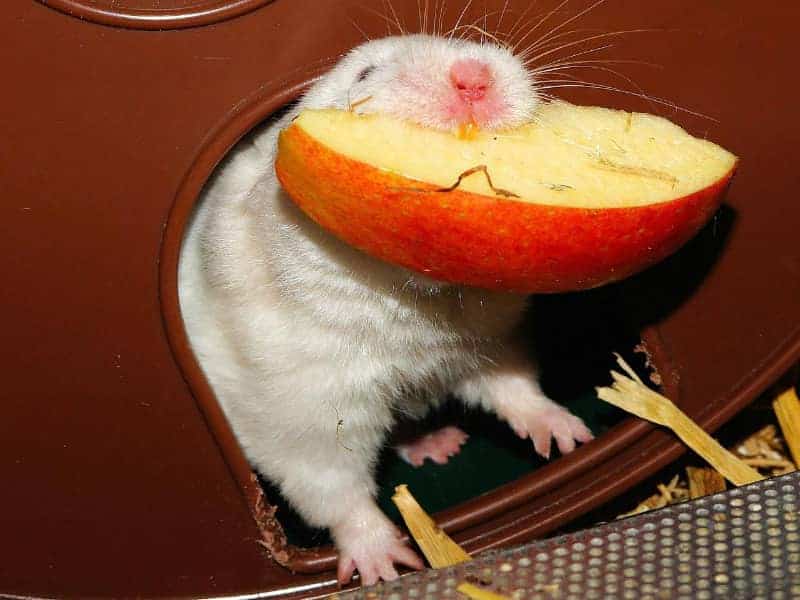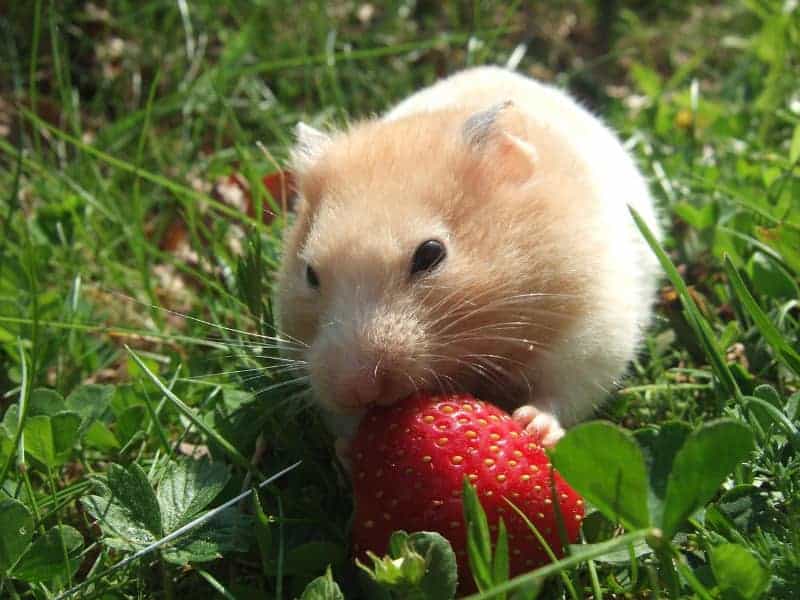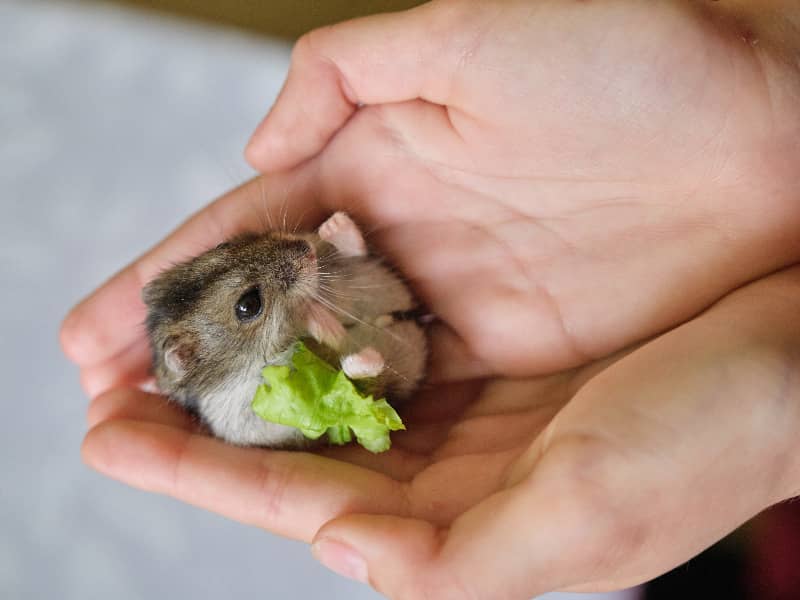
Dsungarian dwarf hamster
You are interested in Dsungarian dwarf hamsters? Wonderful! In this blog post, we'll explore everything you need to know about these fascinating little creatures. From their origins to how to keep them, you'll find all the information you need here.
What is a Dzungarian dwarf hamster?
The Dsungarian Dwarf Hamster is one of the most popular hamster species when it comes to keeping pets. With a body length of about 10 to 12 inches and a weight of around 20 to 50 grams, it is truly a "dwarf" among rodents. Its fur varies in color, but it is mostly gray-brown, with a white belly.
The Dsungarian Dwarf Hamster is characterized by its curiosity and activity primarily in the evening hours. It is omnivorous in terms of diet and displays a diverse behavioral repertoire ranging from digging to climbing to running.
Why are they popular pets?
Dsungarian dwarf hamsters are very popular among pet lovers for several reasons. Firstly, they are relatively easy to keep and do not require much space.
Secondly, they are generally quite sociable and often exhibit less aggressive behavior than some other hamster species. This makes them ideal for beginners and families with children. Third, they are simply adorable! Their cute appearance coupled with their curious nature makes them a real eye-catcher and an asset to any home.
Dzungarian Dwarf Hamster - Origin
Do you want to offer your Dsungarian Dwarf Hamster a happy and healthy life? Then it is helpful to know where these little rodents actually come from and what conditions they find in their natural habitat. So let's dive into their world!
Geographical origin
Dzungarian dwarf hamsters originate from the steppes and semi-deserts of Central Asia, particularly areas such as northwestern China and Kazakhstan.
These regions are characterized by an extreme climate with hot summers and freezing winters. The animals have adapted to these conditions and can survive in a variety of environments, from sand dunes to rocky areas.
Dzungarian dwarf hamster - living conditions in the wild
In the wild, Djungarian dwarf hamsters live in complex tunnel systems that they dig themselves. These underground "dwellings" provide protection from predators and extreme weather conditions.
The animals are mainly nocturnal to escape the heat of the day and avoid their enemies. Their diet consists of a mixture of seeds, fruits, insects and occasionally small vertebrates.
Influence of the natural habitat on the attitude
The adaptability and survival strategies of Dzungarian dwarf hamsters in the wild can provide us with valuable information for their husbandry.
For example, knowing their preference for tunnel systems can help design an enclosure that is appropriate for their species. In addition, understanding their natural diet helps to create a suitable feeding plan.
Dzungarian dwarf hamster - acquisition
So you're ready to get yourself a Dsungarian Dwarf Hamster? That's exciting! But before you rush headlong into this new relationship, there are a few things you should know. From choosing the right retailer to initial equipment and costs, we want to give you some important tips along the way.
Where can you buy Dsungarian dwarf hamsters?
Dsungarian dwarf hamsters are available at many pet stores, but that may not be the best place to buy one. Why? Well, the conditions in some pet stores are not always ideal.
A better option might be a breeder who specializes in Dsungarian Dwarf Hamsters. Breeders often offer animals that are well socialized and used to people. They can also tell you a lot about the specific needs and peculiarities of the animals.
There are also rescue organizations that take in hamsters in need. This option is not only ethically commendable, but also gives an animal a chance to find a new, loving home.
What should you look for when choosing?
Choosing the right Dsungarian Dwarf Hamster can be a challenge, especially if you've never kept one before. But don't worry, we are here to help you!
First, you should pay attention to the age of the hamster. Younger hamsters are often easier to tame and train. Second, look at the hamster's behavior. Is he curious and active or more reserved and lethargic? A healthy hamster should be alert and lively.
Third, check the general health. Look for clean fur, clear eyes, and no signs of respiratory disease or diarrhea. A healthy hamster is a happy hamster!
Initial equipment and costs
Before you bring your new furry friend home, make sure you have everything for his basic needs. These include a suitable enclosure, a running wheel, food and water bottles.
The cost of initial equipment can vary, but expect about €50 to €100 for the enclosure, €10 to €20 for the running wheel, and about €20 for food and other small items. Of course, these are only rough estimates and the actual cost can vary greatly depending on the brand and quality.
Dzungarian dwarf hamster - keeping and care
Now that you know where to buy your Dsungarian Dwarf Hamster and how to make the right choice, it's time to think about its keeping and care. Because a happy hamster is a well cared for hamster!
Suitable enclosures and furnishings
One of the most important elements for keeping a Dzungarian dwarf hamster is the enclosure. It should be sufficiently large, at least 100 x 50 cm floor space, to provide the animal with enough freedom of movement.
A common mistake is to choose an enclosure that is too small because the hamster is "so small". This is a fallacy. In the wild, these small rodents travel long distances, so space for activity is critical.
The enclosure should also have different "zones" for different activities: a sleeping area, a feeding area, and an area for play and activity. Wood chips are a good choice for bedding, and materials for nest building, such as hay, should also be provided.
Dzungarian dwarf hamster - food and diet
Another essential point is the diet of your Dsungarian Dwarf Hamster. These small animals are omnivores and need a varied diet.
Hamster food from pet stores is often well balanced, but it should be supplemented with fresh fruits and vegetables. Be aware, however, that not all fruits and vegetables are suitable. For example, citrus fruits and onion plants are taboo for hamsters.
Occasionally you can also offer animal protein in the form of mealworms or boiled egg. This is especially important for young, growing or pregnant hamsters. A bowl of fresh water should of course always be available.
| Food type | Protein (%) | Fat (%) | Carbohydrates (%) | Dietary fiber (%) |
| Hamster Food (Dry) | 15.0 | 6.0 | 50 | 10 |
| Fresh fruit | 0.5 | 0.2 | 10 | 2 |
| Fresh vegetables | 1.5 | 0.3 | 5 | 3 |
| Mealworms | 55.0 | 30.0 | 5 | 0 |
| Boiled egg | 13.0 | 11.0 | 1 | 0 |
Social needs and loneliness
Dsungarian dwarf hamsters are usually solitary, which makes keeping them easier because you don't have to worry about socialization.
This does not mean that they do not need any social interaction. A little time and attention from you can help the hamster feel more comfortable.
Another point is employment: A running wheel, tunnel and climbing toys can ensure that your hamster is not bored and can live out its natural behavioral repertoire.
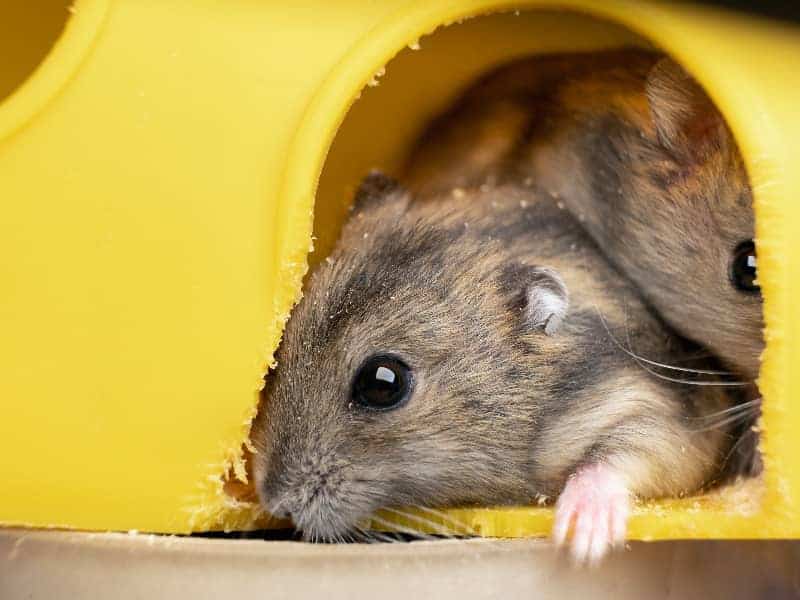
Dzungarian dwarf hamster - health and diseases
A Dsungarian Dwarf Hamster can be a loyal and delightful companion, but as with all pets, it is important to take care of their health. In this section we will go over common health problems, how to prevent them and when a visit to the vet is advisable.
Common health problems
Dsungarian dwarf hamsters are generally hardy animals, but they are not immune to health problems. Among the most common are respiratory diseases, digestive problems and parasite infestations.
Respiratory diseases can be favored by drafts or an overly humid environment. Symptoms include sneezing, coughing and nasal discharge. Digestive problems often occur when the hamster is fed an unbalanced diet.
Parasites such as mites can also be a problem. These little pests can cause itching and skin irritation that can be very uncomfortable for the hamster.
Prevention and treatment
Prevention is better than cure, and that goes for the health of your Dsungarian Dwarf Hamster as well. Some basic tips for prevention are regular cleaning of the enclosure, a balanced diet and avoiding stressful situations.
If your hamster does get sick, it is important to act quickly. For respiratory problems, a humidifier and removing drafts can help, among other things. For digestive problems, it is advisable to adjust the diet.
In case of parasite infestation, there are special medications that can be prescribed by the veterinarian. Early treatment is often crucial for the healing process.
When should you see a veterinarian?
The decision to see a veterinarian should not be taken lightly. If you notice changes in your hamster's behavior or see symptoms such as lethargy, changes in feeding habits or visible signs of illness, it's time to visit the vet.
It's always better to be safe than sorry and consult an expert, especially when it comes to your little friend's health.
Dzungarian dwarf hamster - behavior and training
A Dzungarian Dwarf Hamster is not only cute, but also a very interesting animal with its own character and temperament. In this section you will learn more about how to give your little friend a varied occupation and how the training and handling best succeed.
Character and temperament
Dsungarian dwarf hamsters are known for their friendly and curious nature. They are mostly active and love to explore their surroundings.
Compared to other hamster species, they are less aggressive and bite less often. This makes them an excellent choice for families with children or hamster beginners.
However, they are primarily crepuscular and nocturnal. So if you are looking for a pet that is often out and about during the day, the Dsungarian Dwarf Hamster may not be the best choice for you.
Employment opportunities
A bored hamster is an unhappy hamster. Therefore, it is important to provide sufficient employment opportunities. These include running wheels, climbing frames and various toys.
Tunnels and tubes are particularly popular, as they correspond to the hamster's natural behavior. Material for digging should also not be missing to encourage the natural instinct to dig.
You can also use intelligence toys where the hamster has to search for food or solve small puzzles. This promotes not only physical activity, but also mental.
Tips for training and handling
Dsungarian dwarf hamsters can be trained, but it requires patience and consistency. Slowly get your pet used to handling by first petting it in the enclosure and later gently picking it up.
Use treats as positive reinforcement and avoid abrupt movements that may startle the hamster. Over time, your hamster will learn that interacting with you is a positive thing and behave accordingly.
But remember, each hamster is an individual with its own likes and dislikes. It may take a while until you know exactly how your little friend reacts best.
Conclusion: Dzungarian Dwarf Hamster
A Dsungarian Dwarf Hamster can be a wonderful companion, enriching your life with its curiosity and delightful nature. From choosing the right hamster, to optimal husbandry and care, to health issues and behavior, you've gotten a wealth of information in this blog post to help you give your little friend a happy and healthy life.
The average life expectancy of a Dsungarian Dwarf Hamster is 2 to 3 years. This time may seem short, but with proper care and attention you can ensure that these years are fulfilling and happy for you and your hamster.
So, what are you waiting for? The exciting world of the Dzungarian dwarf hamsters is waiting to be discovered by you!
Author

-
Garden animal - A life with nature
Welcome to my animal blog! My name is Dirk and I am happy to take you on my journey through the fascinating world of animals and gardening.
Born 54 years ago, I have had an insatiable curiosity for the animal world around me since childhood. Although I have moved professionally in other industries, my true passion has always been animals and nature. It is remarkable how a small garden has become such an important part of my life.
Many of my fondest memories are associated with the animals that share our home. Whether it's the curious squirrels that scurry across the trees in the morning, the colorful variety of birds that visit our feeders, or the busy bees and butterflies that pollinate our flowers, every moment with them is invaluable to me.
This blog is my contribution to share my experiences, discoveries and insights with like-minded people. Here I will share stories of unforgettable encounters with animals, give tips on gardening and creating wildlife-friendly habitats, and take you on my journeys through nature.
Thank you so much for being here!
Cordial,
Dirk aka garden animal
Last posts
- 27. February 2024PetsVeganes Hundefutter – Grün und Gesund?
- 18. January 2024ChickensOregano für Hühner
- November 27, 2023HamsterDiurnal hamsters
- November 24, 2023HamsterHamster hammock

